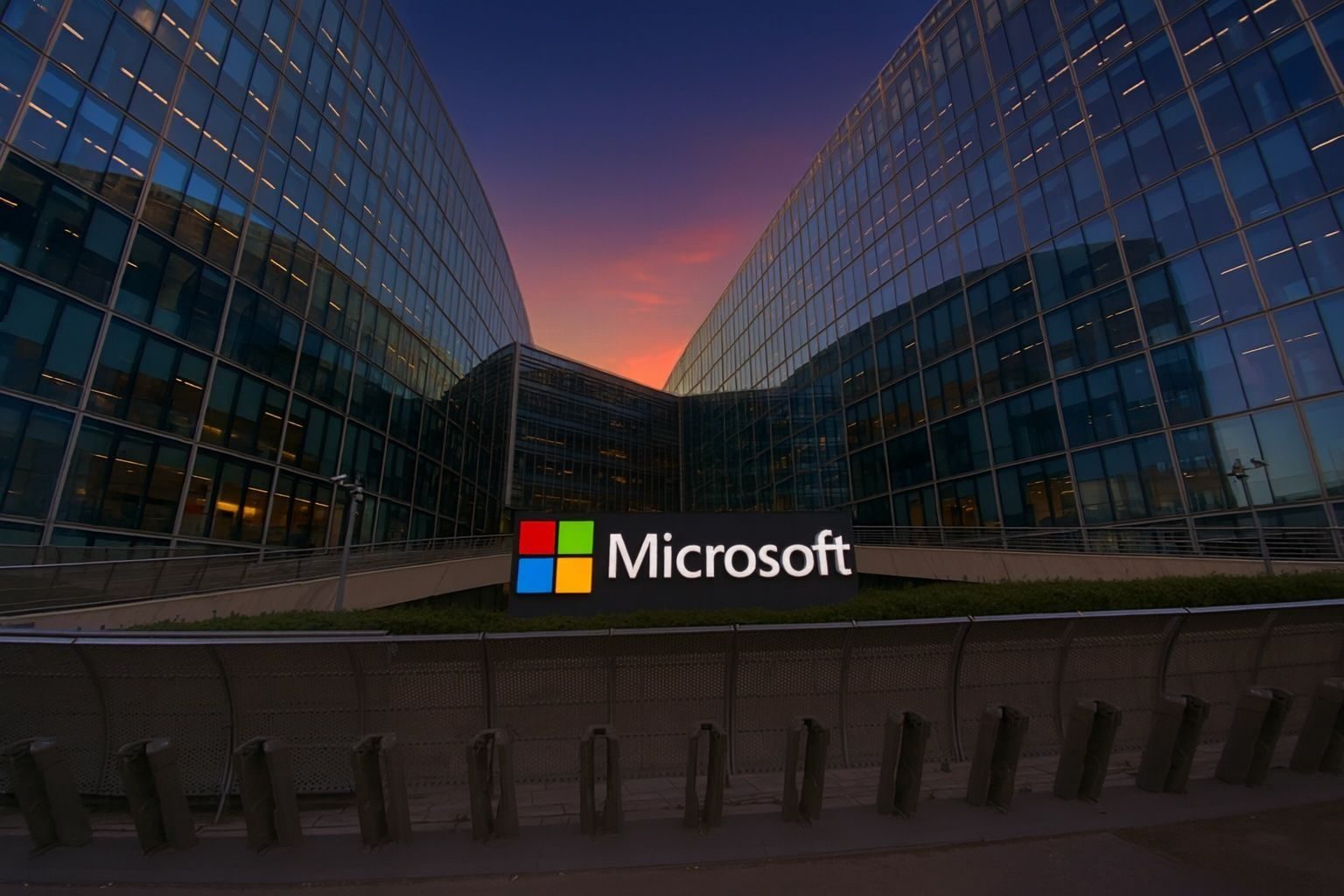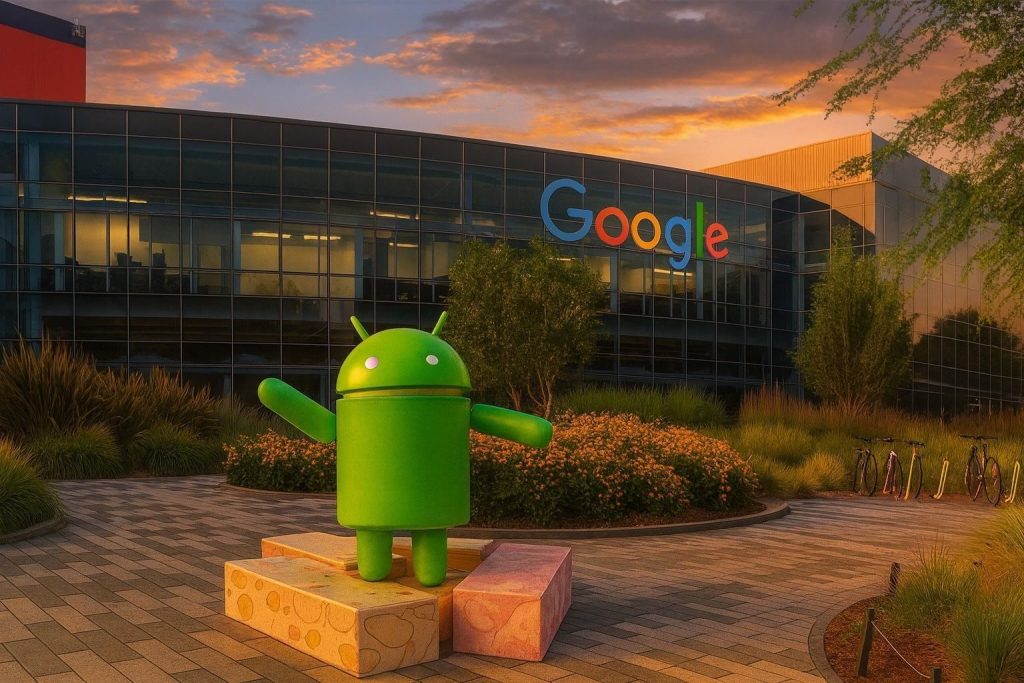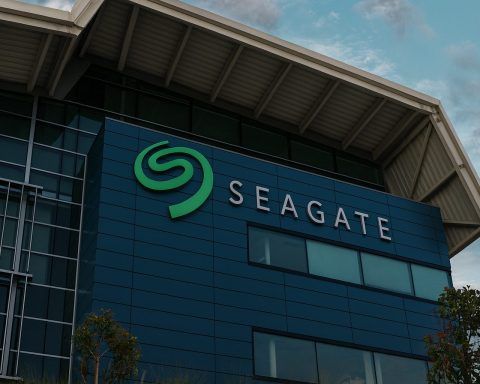Microsoft stock heads into Monday’s open after its sharpest pullback in months, just as Wall Street digests huge new AI commitments, a surprise stake sale by the Gates Foundation, and a changing leaderboard among megacap tech.
Here’s a comprehensive look at what investors should know about Microsoft (MSFT) before U.S. markets open on Monday, November 24, 2025.
1. Where Microsoft stock stands after a bruising week
- Last close (Friday, Nov. 21):
Microsoft finished Friday at $472.12, down 1.32% on the day and around $473.50 in after-hours trading. [1] - Five‑day slide:
The stock is in a five‑session losing streak, dropping about 7.5% over the past week and erasing roughly $283 billion in market value. [2] - YTD context:
Even after the pullback, MSFT remains up ~13% in 2025, roughly in line with the S&P 500’s year‑to‑date performance. [3] - Volume spike:
Trading volume on Friday ran about 42% above its daily average, a sign that institutions are actively repositioning rather than simply drifting lower on light holiday trading. [4]
The immediate driver of the slide: fears that the AI trade has run ahead of fundamentals, particularly given Microsoft’s enormous capital spending plans and mixed reactions to its latest earnings and AI announcements. [5]
2. AI mega‑deal: Microsoft + Nvidia + Anthropic
One of the most important headlines for Microsoft this week is its three‑way alliance with Nvidia and Anthropic, the company behind the Claude AI models:
- Deal structure:
- Anthropic will commit $30 billion of AI workloads to Microsoft’s Azure cloud.
- Nvidia will invest up to $10 billion, and Microsoft up to $5 billion, in Anthropic’s next funding rounds. [6]
- Strategic aim:
Analysts see the partnership as a way to reduce the AI ecosystem’s reliance on OpenAI while keeping Microsoft at the center of high‑end AI infrastructure demand. [7] - Scale signal:
Anthropic plans to dedicate up to 1 gigawatt of compute using Nvidia’s Grace Blackwell and Vera Rubin chips — a build‑out that industry executives estimate could cost $20–25 billion. [8]
For MSFT shareholders, the message is clear: Microsoft is doubling down on AI as an infrastructure business, using capital‑intensive cloud and GPU investments to lock in long‑term workloads from multiple frontier‑model providers, not just OpenAI.
The flip side: moves like this reinforce investor worries that hyperscalers are entering a “circular” AI economy—where partners invest in each other and pre‑commit massive cloud contracts—raising questions about how much of that demand will ultimately translate into durable, high‑margin earnings. [9]
3. Ignite 2025: Copilot, agents and the “frontier firm” vision
Microsoft’s Ignite 2025 developer conference in San Francisco was all about embedding AI into everyday work:
- New product concepts:
- Work IQ – an “intelligence layer” that lets Microsoft 365 Copilot understand a user’s job, data and workflows across emails, files and meetings.
- Word, Excel and PowerPoint agents in chat – task‑specific “mini‑agents” that can iteratively build documents, spreadsheets and presentations.
- Agent 365 – a control plane for managing and securing fleets of AI agents inside large organizations. [10]
- Adoption stats:
Microsoft says over 90% of the Fortune 500 now use Microsoft 365 Copilot, and it has shipped more than 400 new Copilot features in the past year. [11] - Model breadth:
Copilot is now integrated with OpenAI’s GPT‑5, Microsoft’s own models, and Anthropic models, giving enterprises more flexibility in choosing the right model for each workflow. [12]
Research notes from firms like Guggenheim argue that Ignite reinforced the view of Microsoft as the primary enterprise platform for “industrializing” AI, and they reiterated a Buy rating with a $675 price target following the event. [13]
For Monday’s open, the key question is whether the market will reward this product momentum or stay focused on the near‑term cost and capex burden tied to building a “planet‑scale” AI cloud.
4. Earnings recap: fundamentals still very strong
Investors heading into the new week should keep the latest quarterly numbers in mind:
- Q1 FY26 (quarter ended Sept. 30, 2025):
- Revenue: $77.7 billion, up 18% year‑over‑year
- Operating income: $38.0 billion, up 24%
- GAAP net income: $27.7 billion, up 12%
- GAAP EPS: $3.72, non‑GAAP EPS: $4.13, up 23% [14]
- Cloud & AI engine:
- Microsoft Cloud revenue: $49.1 billion, up 26%
- Azure & other cloud services: up 40% in constant currency [15]
- AI spending impact:
- Cloud gross margin fell to 68%, pressured by AI infrastructure build‑out.
- Net income and EPS were reduced by $3.1 billion / $0.41 per share in losses from investments in OpenAIin the quarter. [16]
So while the share price has retreated, the underlying business is still delivering double‑digit revenue and earnings growth, driven by AI and cloud demand. The tension for Monday’s trade is about how much investors are willing to pay for that growth given the size and duration of the AI capex cycle.
5. Bill Gates Foundation just sold 65% of its Microsoft stake
Another headline weighing on sentiment: the Bill & Melinda Gates Foundation Trust dramatically reduced its Microsoft position in Q3 2025.
Key points:
- The foundation sold 17 million MSFT shares, cutting its stake by roughly 65% and realizing about $8.7–8.8 billion based on an average price around $510. [17]
- Microsoft’s weight in the Gates portfolio fell from over 27% to ~13%, though the trust still holds about 9.2 million shares, valued around $4.7–4.8 billion. [18]
- Reporting from GuruFocus and others frames this as portfolio rebalancing and liquidity for higher philanthropic payouts, not a specific bearish call on Microsoft’s business. The foundation plans to increase annual distributions to around $9 billion, requiring more cash from its investments. [19]
For individual investors, the sale is psychologically important—Bill Gates is still closely associated with Microsoft—but the trust remains a major shareholder and there’s no indication this reflects insider information about deteriorating fundamentals.
On Monday, traders will be watching whether headlines about “Gates selling Microsoft” continue to spook retail investors or whether the story is interpreted more as a philanthropic liquidity move than a red flag.
6. Alphabet just leapfrogged Microsoft in market value
Another symbolic shift: Alphabet (Google) has overtaken Microsoft in market capitalization for the first time in years.
- As of November 21, Alphabet’s market value rose to about $3.62 trillion, while Microsoft’s slipped to around $3.51–3.52 trillion, making Google the third‑largest U.S. company behind Nvidia and Apple. [20]
- Alphabet’s stock is up around 58–59% this year, powered by strong earnings, its Gemini AI platform and a favorable antitrust ruling, whereas Microsoft’s 2025 gain is closer to the low‑teens. [21]
This shift doesn’t change Microsoft’s fundamentals, but it does alter the competitive narrative: investors will be asking whether Google is now the market’s preferred AI winner in the near term, and whether that puts additional pressure on MSFT to prove the payoff from its OpenAI, Anthropic and Copilot investments.
7. Wall Street view: still “Strong Buy” despite one high‑profile downgrade
Despite the recent pullback, analyst sentiment on Microsoft stock remains overwhelmingly positive:
- Consensus rating:
33 covering analysts rate MSFT a “Strong Buy” on average, with a 12‑month price target around $628, implying ~33% upside from Friday’s close. The target range runs from $500 to $700. [22] - Fresh targets around earnings:
Multiple major firms—including Citi, JPMorgan, Evercore ISI and Morgan Stanley—reiterated bullish ratings after the October earnings call, with targets mostly in the $575–$690 range. [23]
However, one downgrade has drawn outsized attention:
- Rothschild & Co Redburn analyst Alex Haissl recently cut Microsoft from Strong Buy to Hold, trimming his target from $560 to $500 and warning that gen‑AI economics could be far less profitable than the first wave of cloud computing because of enormous GPU costs and short hardware lifecycles. [24]
Net result: Heading into Monday, MSFT is still treated as a top‑tier AI and cloud compounder by most of Wall Street, but investors are becoming more sensitive to how quickly AI investments translate into cash flow.
8. Stock split chatter is back—but nothing is confirmed
With Microsoft shares having traded above $500 earlier this year and still near that level, speculation about a potential stock split has been intensifying again:
- MSFT has completed nine stock splits since its 1986 IPO, the last one in February 2003 (2‑for‑1). [25]
- Recent commentary notes that a split could:
- Make options and single‑share purchases more accessible to smaller investors
- Improve Microsoft’s weight dynamics in the Dow Jones Industrial Average
- Align with peers like Apple, Tesla, Nvidia and Alphabet, which have all split stock in recent years. [26]
- But importantly, outlets following the story stress that Microsoft has not announced any split, and some analysis suggests that given recent volatility and a lack of board commentary, a split is unlikely in the very near termdespite the speculation. [27]
For Monday’s open, split rumors are more of a background narrative than a direct catalyst. Traders typically react only if/when Microsoft formally announces such a move.
9. Macro backdrop: data‑heavy, holiday‑shortened week
The week of November 24–28 is a shortened Thanksgiving week in the U.S., but it’s packed with delayed economic data that could sway big‑cap tech and AI stocks like Microsoft:
- Tuesday, Nov. 25:
- Wednesday, Nov. 26:
- Weekly jobless claims, durable goods orders and regional manufacturing data provide fresh reads on the cooling labor market and industrial demand. [30]
- Market hours:
- U.S. markets are closed Thursday for Thanksgiving and close early on Friday, which can amplify volatility as liquidity thins. [31]
At the same time, a recent Reuters poll shows about 80% of economists expect another Fed rate cut in December, driven by a weakening labor market, even as inflation remains above target. [32]
Another Reuters analysis explicitly warns that investors are bracing for year‑end turbulence amid doubts about further Fed easing and mounting concerns that AI leaders may be overvalued—a narrative that directly affects sentiment around Microsoft and its peers. [33]
10. Technical picture and key levels to watch on Monday
Technicians will be watching a few closely watched levels as MSFT trades on November 24:
- Recent high and failed breakout:
Microsoft recently attempted a breakout above its all‑time high near $555.45, but the move failed, and shares fell back below the 50‑day moving average, triggering an eight‑day losing streak after the October 29 earnings release. [34] - Nearby support:
Short‑term commentary points to support around the $468 area, where buyers previously stepped in during last week’s sell‑off. [35] - Psychological levels:
The $500 line has become an important psychological threshold for both bulls and bears, especially in the context of stock‑split speculation and options positioning. [36]
What to watch as the bell approaches:
- Whether pre‑market trading shows follow‑through selling from last week’s high‑volume drop, or signs of dip‑buying from long‑term investors and funds.
- Any headline risk around AI—regulation, data‑center power constraints, or further analyst downgrades could pressure the entire AI complex, not just MSFT. [37]
- Flows into or out of Magnificent Seven ETFs and AI‑themed funds, which can amplify moves in megacap names when macro data surprises.
11. Main risks investors should keep in mind
Before trading Microsoft stock around Monday’s open, it’s worth keeping the key risk factors front and center:
- AI capex and margin risk
- Microsoft plans to increase AI capacity by over 80% this year and roughly double its data‑center footprint over two years, a massive capital commitment that has already started to squeeze cloud margins. [38]
- Skeptics argue that gen‑AI revenue could be less profitable and more capital‑intensive than the first cloud wave, potentially weighing on long‑term returns. [39]
- Competitive pressure from Alphabet and others
- With Alphabet now ahead in market cap and aggressively rolling out its own Gemini models and enterprise AI platforms, the battle for AI leadership is intensifying. [40]
- Concentration risk in big‑tech AI
- From Anthropic to OpenAI, the AI ecosystem is consolidating around a handful of hyperscalers (Microsoft, Amazon, Google, Nvidia), increasing regulatory and antitrust scrutiny and raising questions about circular revenue structures. [41]
- Macro & rates
- A weaker economy or a shift in expectations for Fed rate cuts could compress valuations on expensive growth stocks, particularly those tied to AI optimism. [42]
None of these risks are new, but last week’s price action shows that sentiment can swing quickly when AI optimism collides with macro uncertainty.
12. The bottom line for Microsoft stock going into November 24
Heading into Monday’s open, Microsoft sits at the intersection of three powerful forces:
- Strong fundamentals:
- Double‑digit revenue and earnings growth, 40% Azure growth, and rapid AI adoption across Copilot and Azure AI Foundry. [43]
- Aggressive AI bets:
- New multibillion‑dollar Anthropic commitments, a deepened OpenAI partnership, and massive data‑center expansion plans that are reshaping the economics of cloud computing. [44]
- Shifting sentiment:
- A visible losing streak, Bill Gates Foundation selling, Alphabet overtaking Microsoft in market cap, and louder warnings about an AI bubble—all against a backdrop of mixed macro data and looming Fed decisions. [45]
For traders and investors watching MSFT on November 24, the key will be how the market weighs short‑term fear about AI spending and valuations against long‑term confidence in Microsoft’s AI and cloud franchise.
Nothing in this article is financial advice, but if you’re following Microsoft stock, Monday’s session is likely to be an important test of whether buyers are ready to step back in—or whether concerns about an AI‑driven bubble continue to dominate the tape.
References
1. stockanalysis.com, 2. www.trefis.com, 3. www.trefis.com, 4. www.marketbeat.com, 5. www.trefis.com, 6. www.reuters.com, 7. www.reuters.com, 8. www.reuters.com, 9. www.reuters.com, 10. www.microsoft.com, 11. www.microsoft.com, 12. www.microsoft.com, 13. www.insidermonkey.com, 14. www.microsoft.com, 15. www.microsoft.com, 16. www.microsoft.com, 17. m.economictimes.com, 18. www.gurufocus.com, 19. www.gurufocus.com, 20. www.barrons.com, 21. www.barrons.com, 22. stockanalysis.com, 23. www.quiverquant.com, 24. www.businessinsider.com, 25. capital.com, 26. pocketoption.com, 27. capital.com, 28. www.reuters.com, 29. www.kiplinger.com, 30. www.kiplinger.com, 31. www.kiplinger.com, 32. www.reuters.com, 33. www.reuters.com, 34. www.investors.com, 35. www.fxleaders.com, 36. www.ainvest.com, 37. www.reuters.com, 38. www.microsoft.com, 39. www.businessinsider.com, 40. www.barrons.com, 41. www.reuters.com, 42. www.reuters.com, 43. www.microsoft.com, 44. www.reuters.com, 45. www.trefis.com








